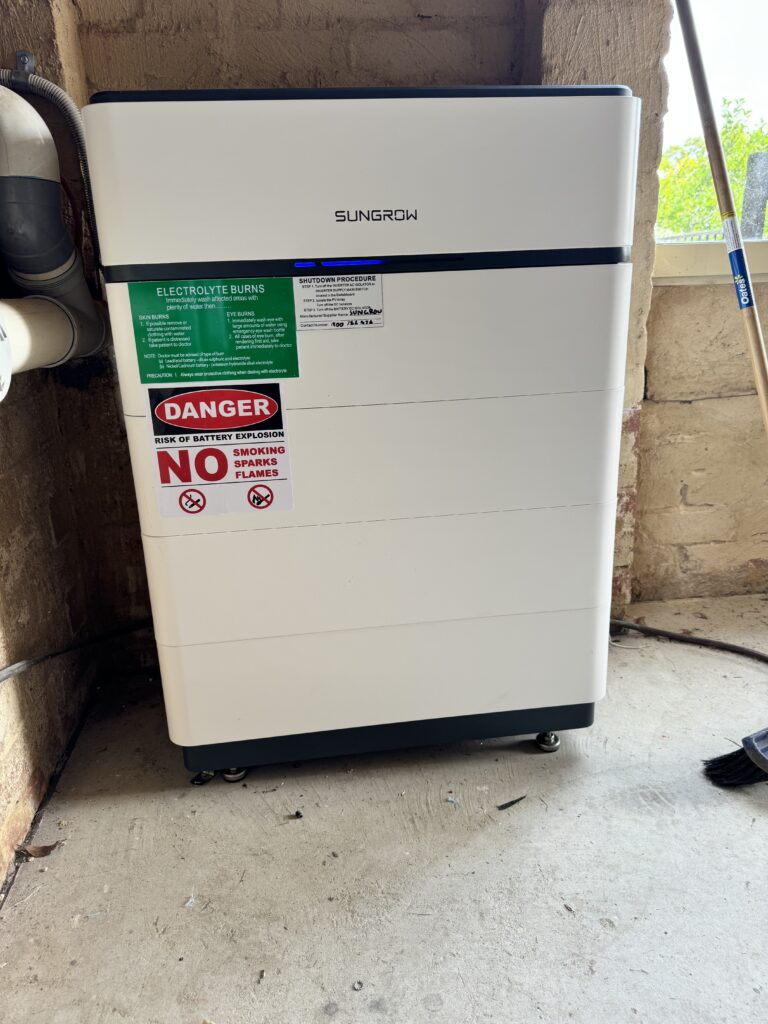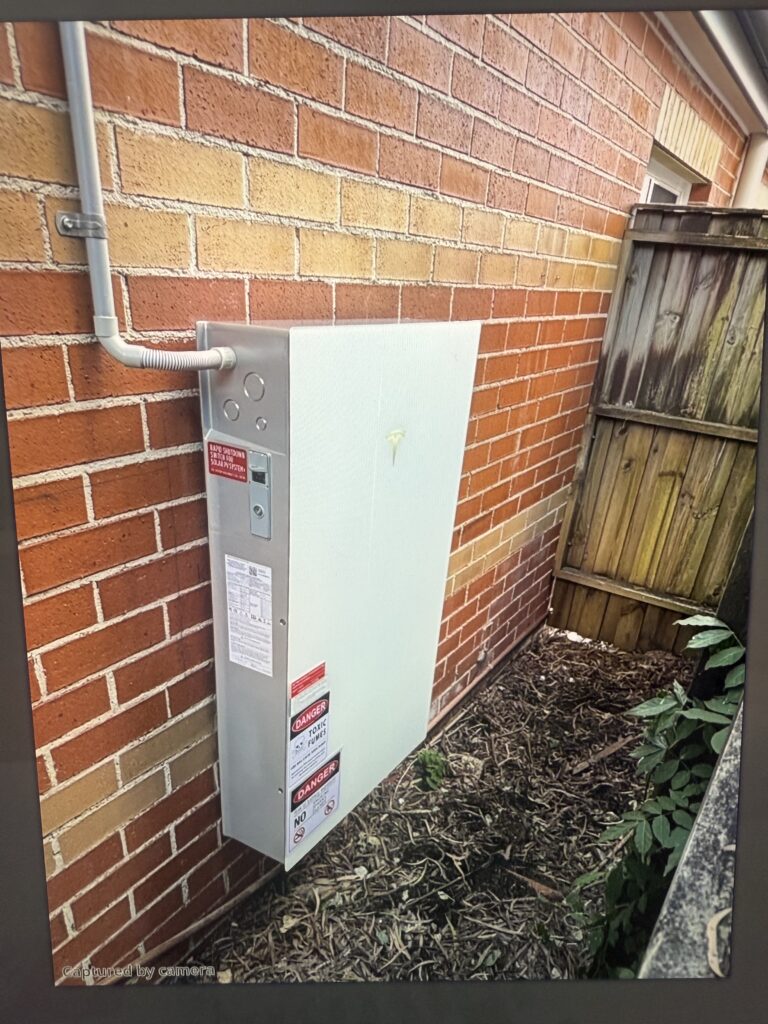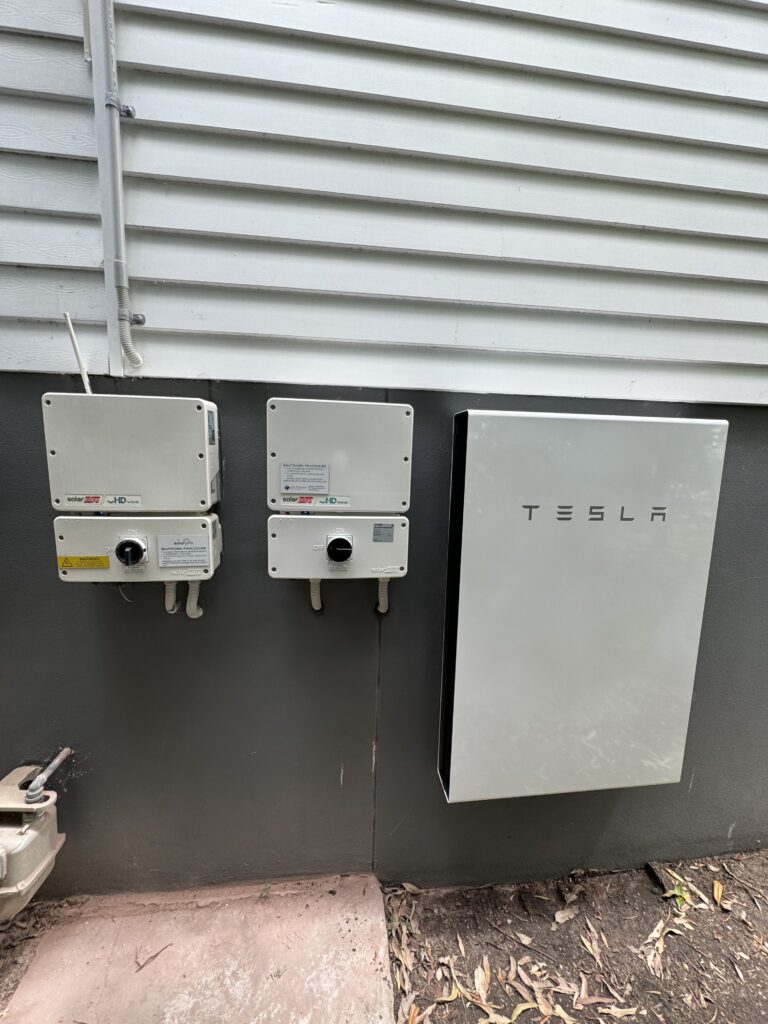First you need to understand what determines battery size
Battery size depends on your daily energy use, solar generation, and how much backup power you need during the night or a blackout. You should also future proof your investment – especially if you have an EV and plan on installing and electric vehicle charger later on. The aim is to store enough energy for your home without overspending on unused capacity.
Know how battery capacity is measured
Battery capacity is measured in kilowatt-hours (kWh) — the total amount of energy a battery can store.
1 kWh equals 1,000 watts used for one hour.
Example: a home that uses 20 kWh per day generally needs a 10–13 kWh battery to cover overnight usage.
Compare usage across Australian homes
| Household type | Average daily use | Recommended battery size |
|---|---|---|
| Apartment or small unit | 8–12 kWh | 5–8 kWh |
| Standard 3-bedroom home | 15–20 kWh | 10–13 kWh |
| Large family home | 25–35 kWh | 13–20 kWh |
| Home with EV charging | 30 kWh + | 15–25 kWh |
Appliances such as air conditioning, pool pumps, and EV charging increase battery requirements.

Match your battery to solar generation
Battery capacity should suit your solar output. Oversizing leads to underused storage.
Example:
- A 6.6 kW solar system produces around 25 kWh on a sunny day.
- A 10 kWh battery stores most of that excess for night use.
- Larger systems (10 kW+) usually pair best with 13–20 kWh batteries.
If you export a lot of power to the grid, a bigger battery helps you use more of your own energy.
Check key factors before installation
- Daily consumption – energy used after sunset.
- Solar generation – average daily production from your panels.
- Backup coverage – how long you want power during outages.
- Tariffs – compare off-peak and feed-in rates.
- Future needs – plan for EV charging or new appliances.
Choose the right battery type
| Type | Chemistry | Cycle life | Notes |
|---|---|---|---|
| Lithium-ion (LiFePO₄) | Lithium iron phosphate | 6,000–10,000 cycles | Long lifespan and safe |
| Lithium-ion (NMC) | Nickel manganese cobalt | 4,000–6,000 cycles | Compact and efficient |
| Lead-acid / AGM | Lead-based | 500–1,500 cycles | Low cost, short life |
Lithium batteries dominate the market for efficiency and reliability.

Understand usable vs nominal capacity
Manufacturers list nominal capacity, but not all of it is usable.
A 13.5 kWh Tesla Powerwall, for example, provides about 12.2 kWh usable.
When comparing products, focus on usable capacity.

Decide how much backup power you need
If blackout protection is important, choose a hybrid inverter with a dedicated backup circuit.
Full off-grid systems need one to two days of storage and often a generator.
For most grid-connected homes, partial backup for essentials is enough.
See common system combinations
| Solar system | Battery size | Expected self-consumption |
|---|---|---|
| 6.6 kW | 10 kWh | 80–90% |
| 10 kW | 13 kWh | 85–95% |
| 13 kW | 20 kWh | 90% + |
Larger systems reach higher self-consumption and reduce grid reliance.
Plan for future expansion
Most modern batteries can be expanded. Start smaller and add modules as your energy use increases.
Ensure your inverter and switchboard can support extra storage capacity.
Get expert sizing and installation
Correct battery sizing requires analysing your energy usage, solar production, and grid setup.
NWE Group designs and installs solar battery systems across NSW and Queensland, including Tesla, BYD, Sungrow, and SolarEdge products.
All installations comply with AS/NZS 5139 and are engineered for long-term reliability and safety.
Request a quote or site assessment at nwegroup.com.au.
